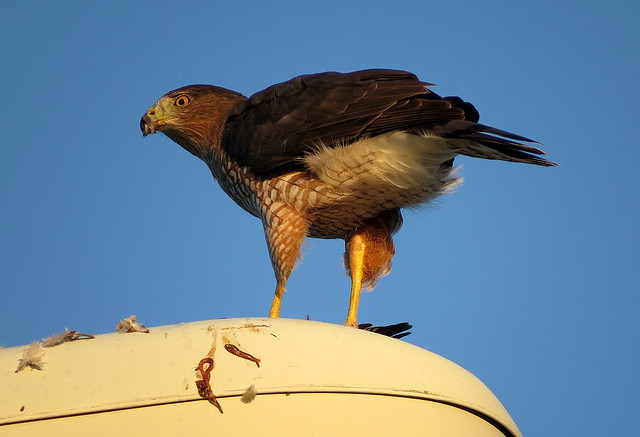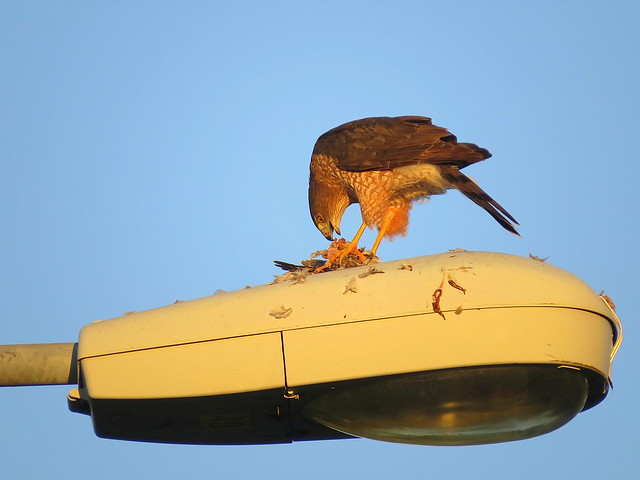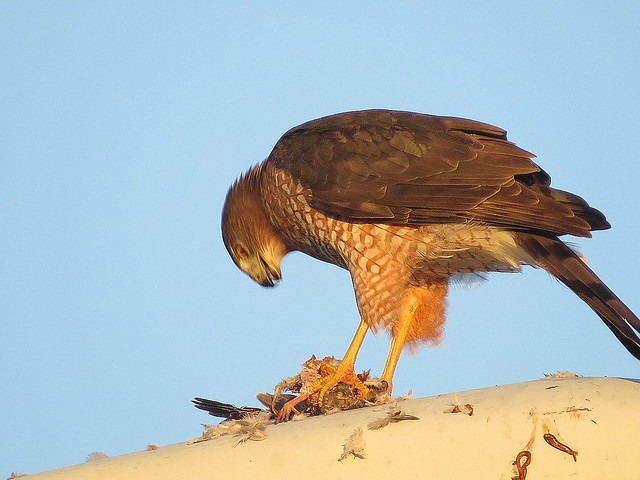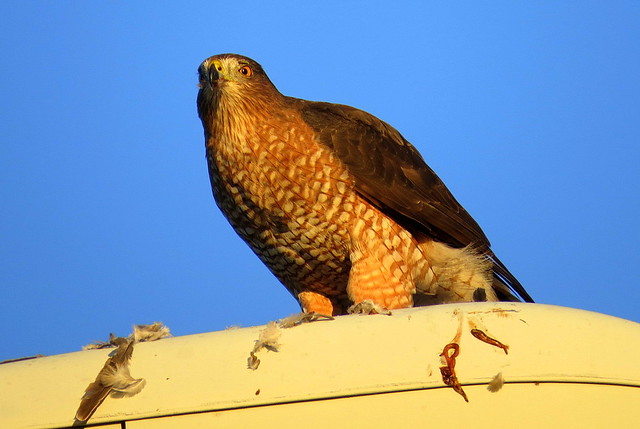A light breakfast, Forest Park, 140914
September 16, 2014
After I caught sight of the Osprey fishing in the Grand Basin in Forest Park, my friend Danny Brown pinged me, and we arranged to go to Forest Park again on Sunday to try our luck.
As he went to park the car near the Visitors Center, I caught sight of this
An unfortunate bird had become prey to the talons and beak of this raptor, and was being polished off on top of a light fixture!
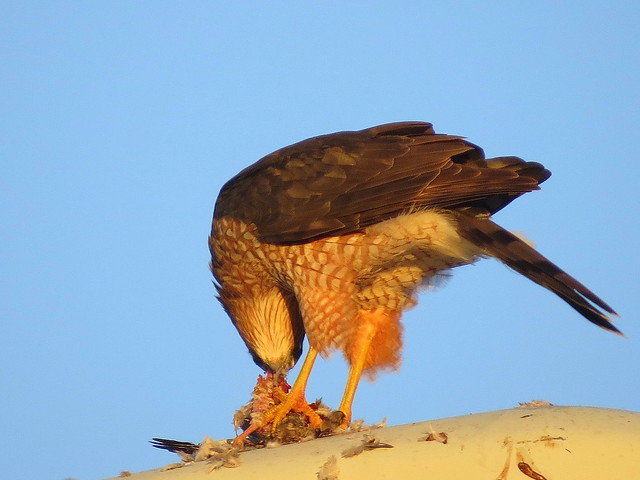 The Cornell Lab of Ornithology says, Cooper's Hawk, Accipiter cooperii, is "A medium-sized hawk with the classic accipiter shape: broad, rounded wings and a very long tail. In Cooper’s Hawks, the head often appears large, the shoulders broad, and the tail rounded."
The Cornell Lab of Ornithology says, Cooper's Hawk, Accipiter cooperii, is "A medium-sized hawk with the classic accipiter shape: broad, rounded wings and a very long tail. In Cooper’s Hawks, the head often appears large, the shoulders broad, and the tail rounded."
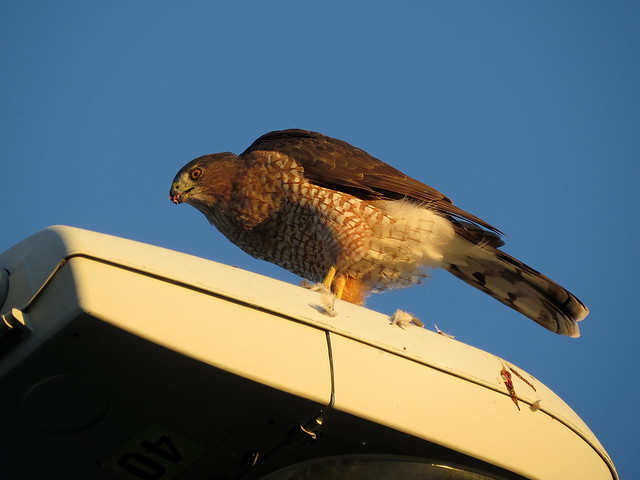 From the yellow eye, it was apparent that this was a sub-adult.
From the yellow eye, it was apparent that this was a sub-adult.
 This bird was named after the naturalist William Cooper, one of the founders of the New York Lyceum of Natural History.
This bird was named after the naturalist William Cooper, one of the founders of the New York Lyceum of Natural History.
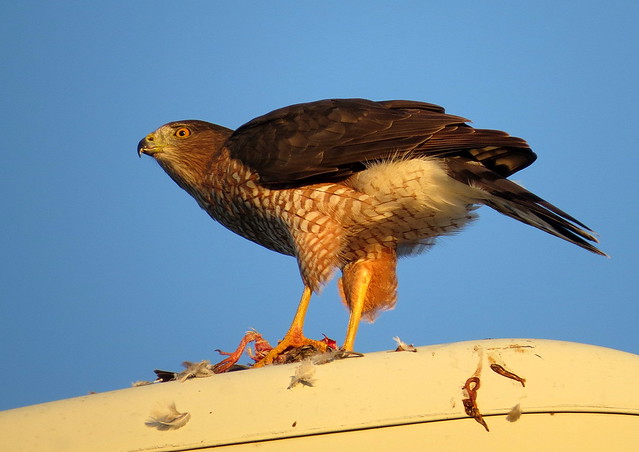 Their breeding range extends from southern Canada to northern Mexico.
Their breeding range extends from southern Canada to northern Mexico.
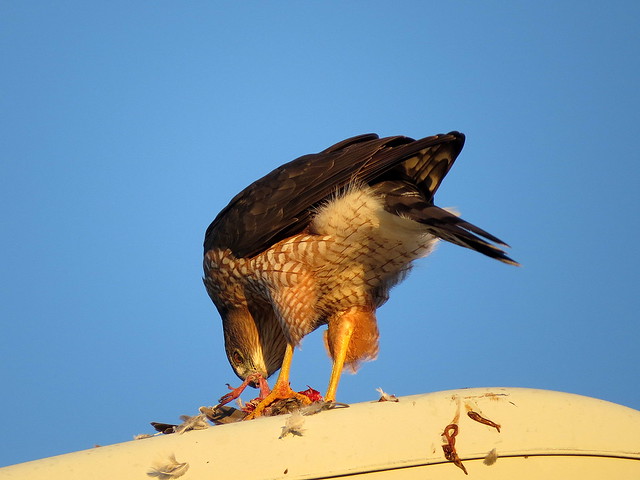 The sun was coming up behind the bird, and I experimented with taking the shots against it:
The sun was coming up behind the bird, and I experimented with taking the shots against it:
 The wiki says, "These birds capture prey from cover or while flying quickly through dense vegetation, relying almost totally on surprise. One study showed that this is a quite dangerous hunting style." They even prey on other raptors if they can, or small mammals.
The wiki says, "These birds capture prey from cover or while flying quickly through dense vegetation, relying almost totally on surprise. One study showed that this is a quite dangerous hunting style." They even prey on other raptors if they can, or small mammals.
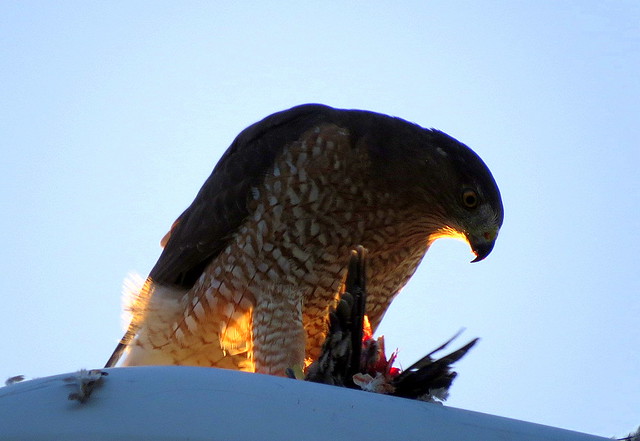 During their flight displays the male will begin by diving toward the female. A slow speed-chase follows involving the male flying around the female exposing his expanded under tail coverts to her. The male raises his wings high above the back and flies in a wide arc with slow, rhythmic flapping. Courting usually occurs on bright, sunny days, in midmorning...not at all surprising weather for romance!
During their flight displays the male will begin by diving toward the female. A slow speed-chase follows involving the male flying around the female exposing his expanded under tail coverts to her. The male raises his wings high above the back and flies in a wide arc with slow, rhythmic flapping. Courting usually occurs on bright, sunny days, in midmorning...not at all surprising weather for romance!
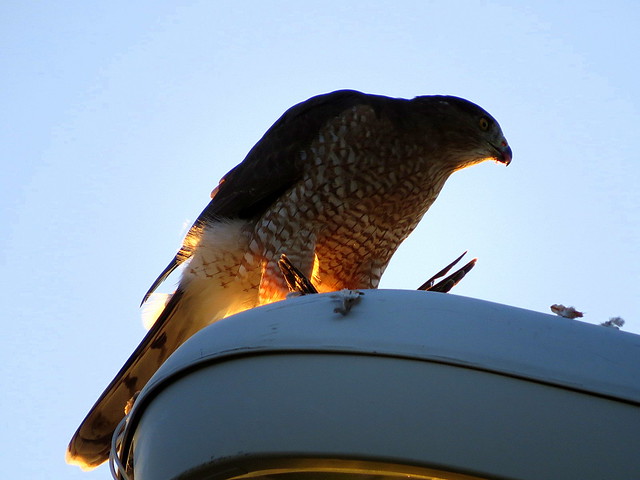 Over a two-week period the pair builds the nest, and the female incubates the eggs between 30 to 36 days.
Over a two-week period the pair builds the nest, and the female incubates the eggs between 30 to 36 days.
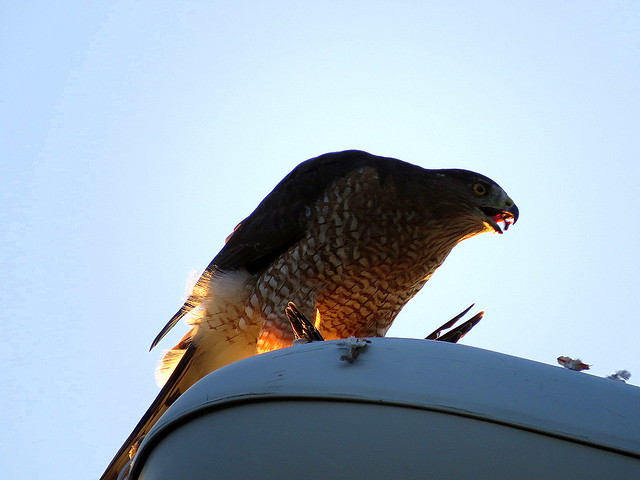 Cooper's hawks have been known to live as long as 12 years in the wild, and rarely fall prey to other raptors like Red-tailed Hawks, Great Horned Owls, Peregrine Falcons, Golden Eagles, and Northern Goshawks.
The Cooper's hawk, as a natural predator of almost any North American bird smaller than itself, can inadvertently deplete populations of rarer, conservation-dependent species. The American kestrel, whose populations have experienced considerable decrease, is one species in which the extensive predation by the recovered Cooper's hawk population is a major concern. So this is one instance where conservation has had another side to it!
Cooper's hawks have been known to live as long as 12 years in the wild, and rarely fall prey to other raptors like Red-tailed Hawks, Great Horned Owls, Peregrine Falcons, Golden Eagles, and Northern Goshawks.
The Cooper's hawk, as a natural predator of almost any North American bird smaller than itself, can inadvertently deplete populations of rarer, conservation-dependent species. The American kestrel, whose populations have experienced considerable decrease, is one species in which the extensive predation by the recovered Cooper's hawk population is a major concern. So this is one instance where conservation has had another side to it!
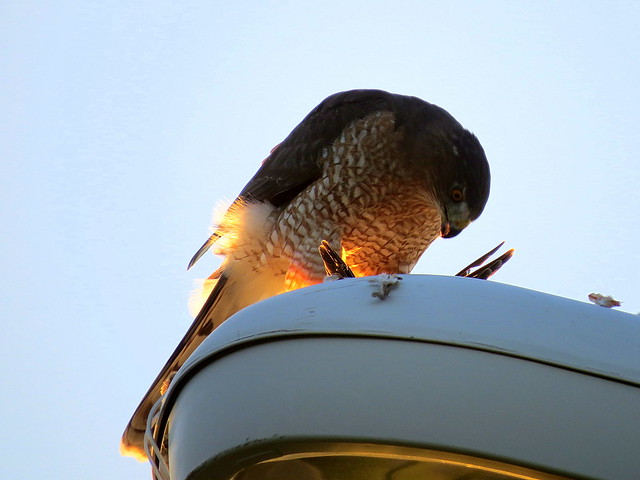 We left this fascinating bird of prey to the remnants of its meal, and went on our way.
We left this fascinating bird of prey to the remnants of its meal, and went on our way.
